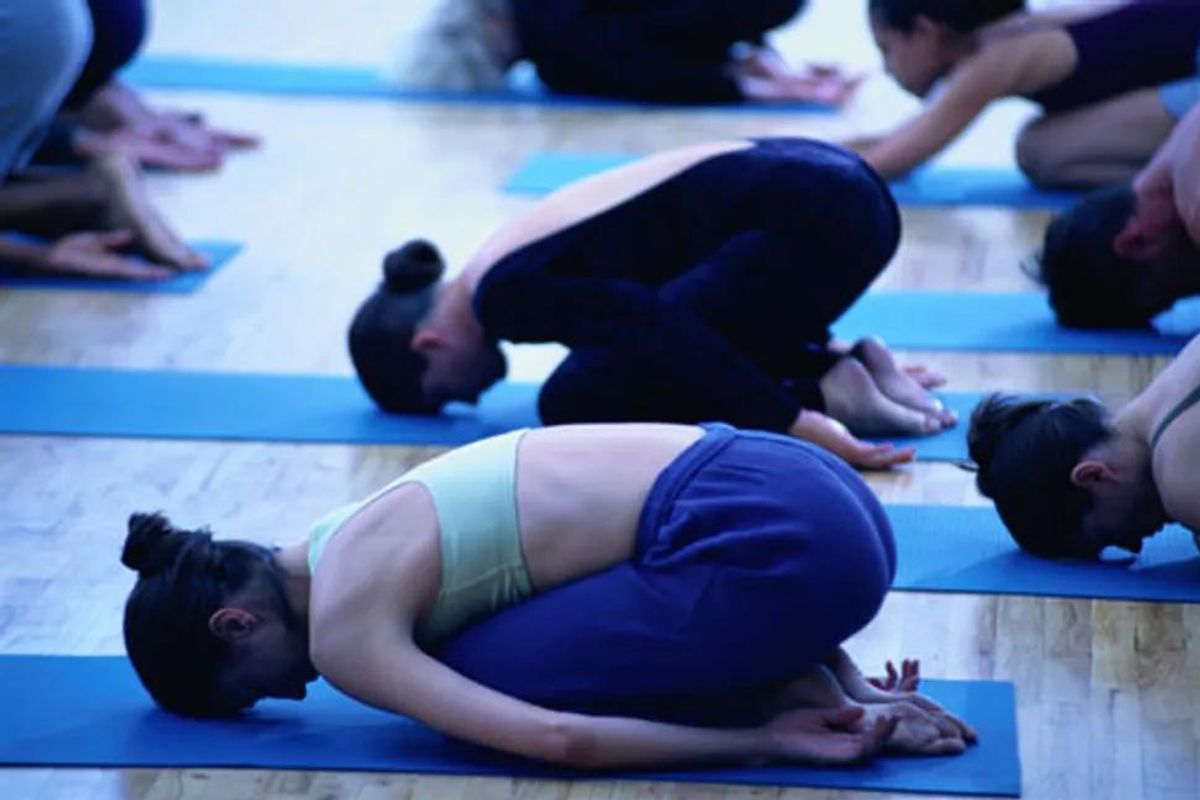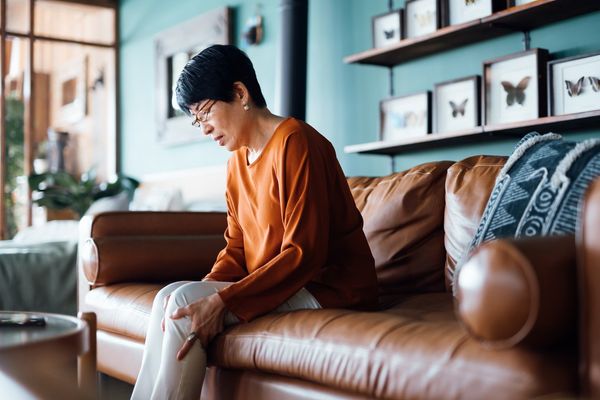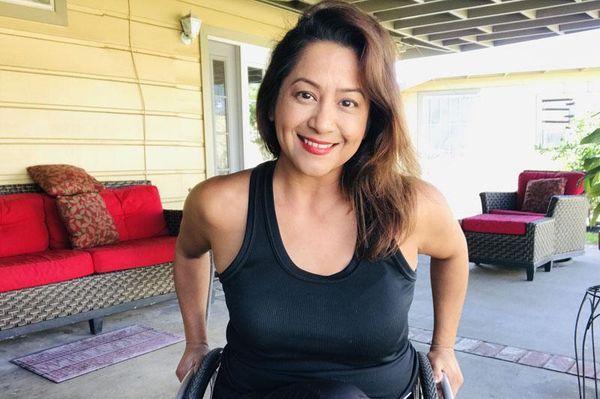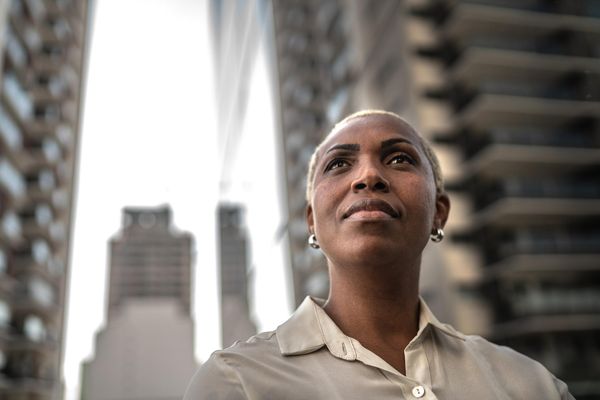Everyone needs physical activity for good health. Yet when women develop conditions such as arthritis, high blood pressure or too much weight or are affected by cancer or other diseases, becoming or staying physically active may seem impossible.
Medical challenges can produce pain, limit flexibility, weaken muscles, cause fatigue and make bones brittle or joints ache—regardless of age. It's not surprising that, for years, women who suffered an illness or chronic condition were advised not to exercise. Even today, with more acceptance of the idea of exercising despite physical limitations, many women assume that they can't be active.
If that describes you, or someone you know, take heart: Exercise adapted to your condition can help you move more easily, become stronger and even decrease pain. "The key is to choose the type of exercise that best fits the need," says Marian A. Minor, PT, PhD, a researcher on arthritis and exercise and chair of the department of physical therapy at the University of Missouri in Columbia, MO.
What's important is to get moving, because lack of physical activity can lead to worsening disability and problems related to being sedentary, such as heart disease.
Moving safely
With the help of your doctor or a physical therapist trained in adaptive exercise, you can choose the types of exercise best suited to your condition and current strength level. Health care providers also may know about local classes designed for people with health concerns similar to yours.
For many kinds of arthritis, stretching exercises improve muscles, tendons and joints, says Dr. Minor. Strengthening routines with light weights help muscles generate force and become stronger. Aerobic activities, such as brisk walking, benefit cardiovascular endurance and overall fitness. Women with arthritis or other joint and muscle problems should avoid high-impact exercises, such as soccer, step aerobics and basketball, that put a lot of stress on hips, knees and ankles.
Although women with arthritis may worry that movement will bring further problems, research shows that moderate exercise does not cause damage. A recent study looking at the development and progression of knee osteoarthritis (the "wear-and-tear" type of the disease) found that exercise did not accelerate the condition. To the contrary, those who exercised improved their physical functioning and reduced the pain and disability they experienced.
That was also true when a group of older patients with knee osteoarthritis took up tai chi exercise regularly. They practiced the Chinese martial arts movements for 12 weeks and significantly decreased their knee pain compared with a control group.
With rheumatoid arthritis, a chronic and inflammatory disease that can cause severe damage (and is two to three times more likely to occur in women), research shows that exercise is safe, benefits physical abilities and may lower inflammation. It also helps other muscle inflammatory diseases, such as chronic obstructive lung disease (COPD).
Classes help
Adaptive exercise may sound like serious business, but it can be lots of fun. The Healthy-Steps exercise program (also known as the Lebed Method) was developed by two doctors and a dance specialist to help women after breast cancer treatment. Some of these women experience lymphedema (swelling, usually in the arm or chest), "frozen" shoulder, range-of-motion problems or other conditions that keep them from being physically active.
The exercises in Healthy-Steps sessions are designed to be both playful and therapeutic—to restore movement, increase shoulder range-of-motion, reduce swelling and lessen fatigue. The program, which also attracts people affected by other cancers, fibromyalgia, Parkinson's disease and a variety of conditions, is offered in group sessions through many hospitals and community centers. You can practice the exercises on your own as well, but you probably won't laugh as much.
Dr. Minor and several colleagues studied the Arthritis Foundation Exercise Program program, also available at many health care facilities. "We found that people got better in terms of self-reported abilities and their measured physical abilities, such as balance," she says. "And they said they were better able to manage their arthritis symptoms." To find Arthritis Foundation exercise classes near you, click here and enter your zip code.
Adaptive yoga
Lakshmi Voelker, a traditional yoga teacher, had a student who was in her 20s and struggling with the debilitating effects of rheumatoid arthritis. The young woman took medication and had started practicing yoga because she heard it could help her condition. Indeed, she had gotten stronger and better, when one day she called Voelker in tears.
"She was having a flare-up (of the disease) and couldn't zip her pants or turn on the car. And she couldn't get on the yoga mat," Voelker recalls. "That was a big concern because that's what saved her to begin with."
Being an inflammatory disease, rheumatoid arthritis can flare up frequently. It literally chews away at bone and cartilage in joints, causing pain and loss of movement and can even affect other organs.
Voelker sat up in a chair all night, considering what to do. When her cat walked by, she stretched out her leg to pet it with her foot. That was her "aha!" moment: She realized that, in the chair, she was sitting in a classic yoga pose, or asana. She began adapting and diagramming other poses that the woman could accomplish from a seated position in a chair, rather than on a floor mat.
The next day, Voelker hurried to the woman's house to show her. The woman practiced at home for six months, then announced she was returning to yoga class but wanted a chair placed on her mat. Her yoga exercise continued successfully, from a chair rather than on the ground.
Voelker kept adding new chair poses, creating double chair asanas for larger people or those needing more support, pair chair poses for exercising with a partner and adding weights to help build bone and muscle.
Nearly 30 years after helping that first woman, Voelker has taught her chair yoga techniques to people with cerebral palsy, obesity, hip and knee injuries, lupus, multiple sclerosis, wrist pain, glaucoma and more. Some of her students have been in wheelchairs or bedridden. The poses can be done from any chair (or bed), so long as the wheels are locked, although a fixed-leg chair with no arms is best.
The poses "build flexibility, balance, confidence, strength, oxygenation of the blood and even, at a low level, lubrication of joints," says Voelker, who adds that learning to breathe properly and relax are also part of the exercises.
Adaptations geared to individual health concerns are important, she notes. Women with osteoporosis or osteopenia should not tilt their heads and necks backward, so she gives them modified movements. "If you're in a chair and have MS, you should do less twist than others. You still benefit," Voelker says. "A person who weighs 300 pounds can get the same benefit by turning and looking at the corner of the room rather than twisting all the way to the back wall."
Voelker has certified about 400 teachers of her chair yoga method in the United States. To find an instructor in your area, or learn more, click here.
More from HealthyWomen.org
Pregnancy is definitely not a disability, but you will want to adapt your physical activity to your needs. To find out how, read Maternal Moves: Staying Fit While Pregnant and watch our Postpartum Exercises video.







